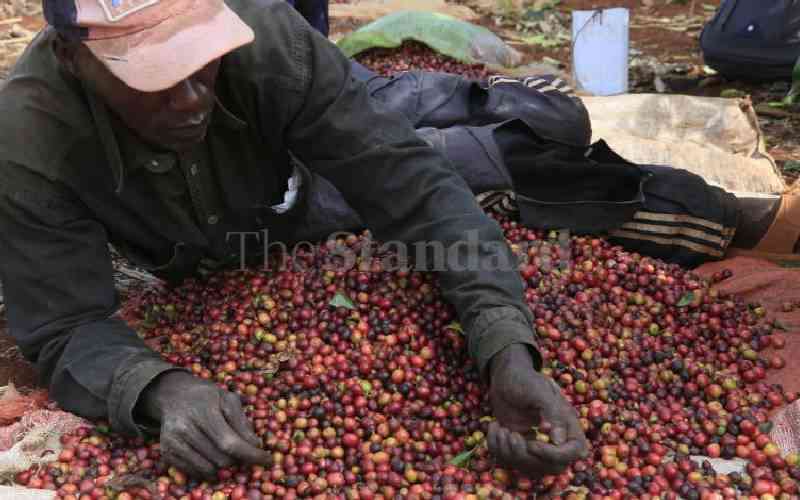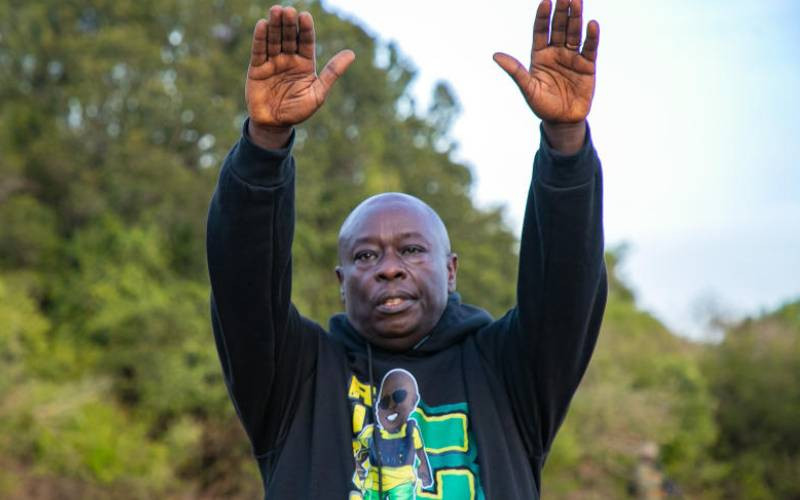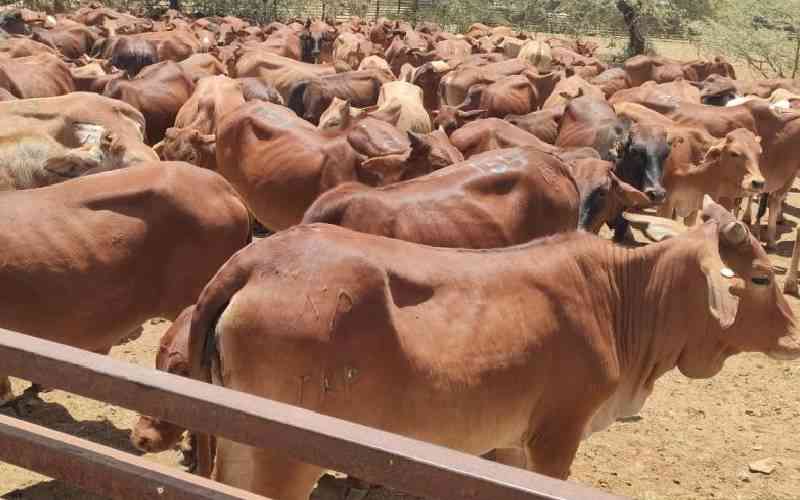As some residents of Igamatundu sub-location in Tharaka Nithi County complain of harsh climatic conditions, one farmer is thriving.
Gerald Gicheru’s 25-acre farm — Green Fair Acres — is bubbling with life. The farm has a significant acreage under mangoes (nine acres), another under bananas (eight acres) and a quarter under macadamia nuts.
The mangoes’ section is well pruned and spaced while the banana section is equally well-partitioned, mulched and each section tucked with a specific variety. He supplies fruits and nuts to the local market and major suppliers who serve markets in Nairobi come to collect the fruits at the farm in trucks. The farm has 1,000 mango trees that produce 20,000 tonnes of fruit per season, 1,500 banana tree that bring forth 1,000 kilos of bananas every week.
The blunders
He grows seven varieties of bananas - FHIA 17, FHIA 18, Grand Nain, Williams, Jian Cavendish, Uganda Green and Kampala. On average he makes a profit ranging from Sh500,000 to Sh1 million per season from selling his produce.
So how did he begin this thriving project?
Gicheru tells Smart Harvest that it has been a journey of hills and valleys, roses and thorns but he has overcome all the odds.
“I began farming in the 80s by trying different ventures. At first, I was a subsistence farmer but I decided to broaden my vision by embracing agribusiness on a large scale,” says Gicheru, a retired civil servant.
There were several false starts, however.
“The first thing that came to my mind was mangoes due to the high humidity in the area. However, when I started, I did not consult any expert and my mango project flopped. The mangoes developed to maturity but they formed a canopy because the spacing was small so they never thrived. I harvested no fruits,” he says.
In 2008, he says he consulted some experts for professional advice. They advised him on the right spacing of 30f x 30f and the right care for each mango plant.
“I learnt that mangoes need to be pruned immediately after harvesting to allow the tree grow horizontally and this should be followed by manuring,” he says.
He continues: “Applying manure should not be done near the stem but a shallow furrow should be dug round the plant following the tree’s canopy because that’s where the roots are.”
After applying manure the plants always look ‘stressed’ but he advices farmers not to water them. “Watering will make the plant look healthy by flashing lots of leaves but in the end there will be no fruits.”
Key aspects
Stay informed. Subscribe to our newsletter
He advises that watering should be done after flowering. Gicheru cites three key aspects when dealing with mangoes — treating the soil, watering and manuring.
His other challenge was in managing the mangoes and marketing: “The cost of managing mangoes was so high. Mangoes also matured once a year and at the same time in the region, which causes a flood in the market leading to low prices.”
Value addition
This is what prompted Gicheru to plant the late maturing varieties that hits the market when the mango supply is low.
He also diversified to sweet yellow passion, pawpaw, macadamia, butternut, bananas and fish.
Among these, he says only bananas and macadamia thrived: “Butternut was affected by lack of rain and extreme sunshine, sweet yellow passion shrunk at maturity, pawpaw and fish failed terribly.”
Due to water challenges, Gicheru was forced to dig a shallow well that ensured a continuous supply of water in the farm.
He has also learnt that lack of water makes the banana weak making it fall before maturity. He says a banana plant requires at least 20 litres of water a week.
Of all the crops he plants, Gicheru says macadamia farming is one of the best ventures. “Macadamia does not have a lot of work; the only task a farmer engages in is harvesting as there is no pruning, no watering and the harvest fetches premium at the market,” he says.
Parting shot?
He wants the county government to establish a fruit processing factory to help add value on products like juices, which fetch more money.
 The Standard Group Plc is a
multi-media organization with investments in media platforms spanning newspaper
print operations, television, radio broadcasting, digital and online services. The
Standard Group is recognized as a leading multi-media house in Kenya with a key
influence in matters of national and international interest.
The Standard Group Plc is a
multi-media organization with investments in media platforms spanning newspaper
print operations, television, radio broadcasting, digital and online services. The
Standard Group is recognized as a leading multi-media house in Kenya with a key
influence in matters of national and international interest.
 The Standard Group Plc is a
multi-media organization with investments in media platforms spanning newspaper
print operations, television, radio broadcasting, digital and online services. The
Standard Group is recognized as a leading multi-media house in Kenya with a key
influence in matters of national and international interest.
The Standard Group Plc is a
multi-media organization with investments in media platforms spanning newspaper
print operations, television, radio broadcasting, digital and online services. The
Standard Group is recognized as a leading multi-media house in Kenya with a key
influence in matters of national and international interest.









